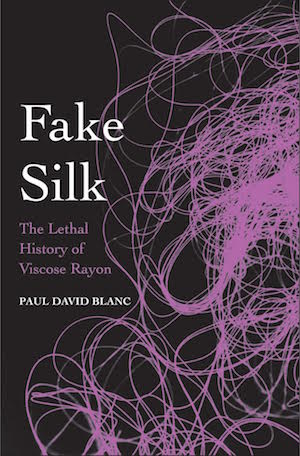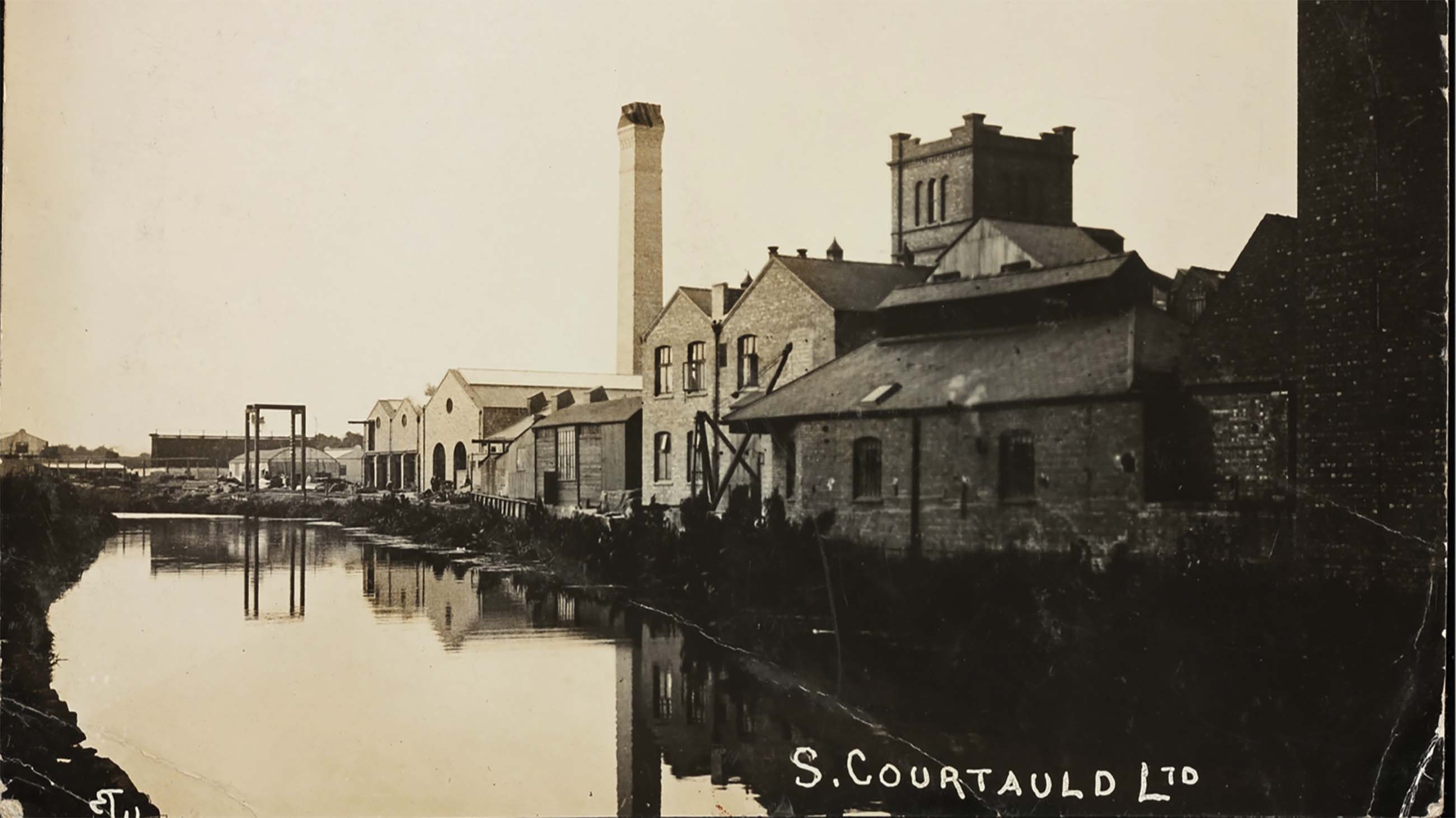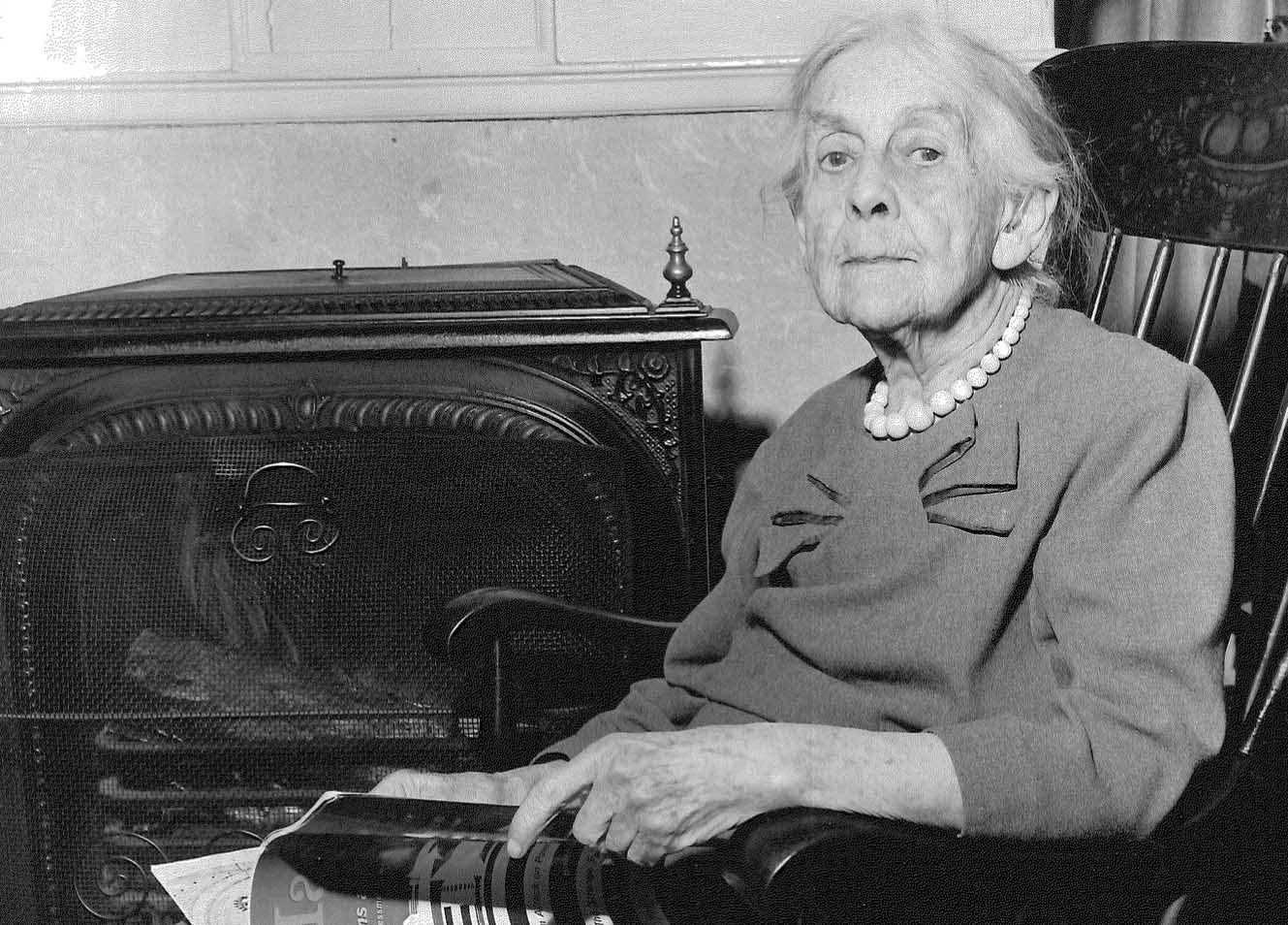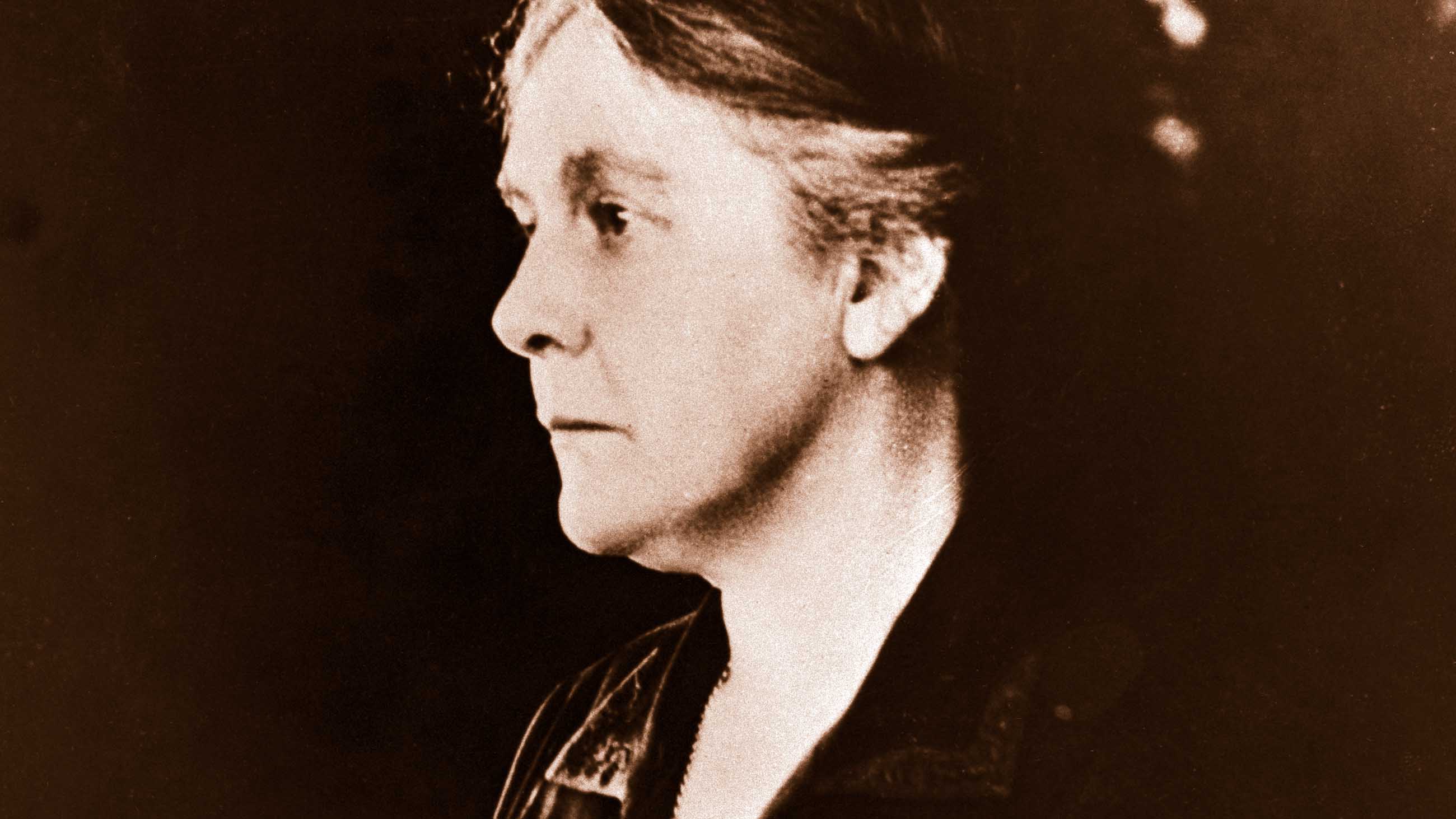On the morning of March 11, 1933, Western Union delivered a telegram from Wilmington, Delaware, to Dr. Alice Hamilton at the Harvard Medical School that began, “RAYON FACTORY HAVING EPIDEMIC OF MENTAL CASES,” and ended, “PLEASE ANSWER QUICKLY.”

This article is adapted from Paul David Blanc’s book “Fake Silk: The Lethal History of Viscose Rayon,” published by Yale University Press; reprinted by permission.
There could have been no more knowledgeable or better-placed recipient of such an urgent appeal. Alice Hamilton was a leading U.S. authority on the toxicity of carbon disulfide, the compound that appeared to be causing the rayon illnesses. Back in 1915, as a medical expert working with the federal Bureau of Labor Statistics, she had studied its use in the rubber industry — though even then it was falling out of favor, in part because of its well-recognized dangers.
Hamilton had inspected nine rubber factories for the bureau. Of 16 cases of mental illness she tallied, one worker had been briefly committed to an insane asylum and several others had experienced other nervous system complaints. One man had worked for only a month before he began to show signs of derangement: “He was Hungarian and spoke no English, and the foreman did not recognize his condition until he became very much excited and unmanageable. He was sent home, and his wife reported that he acted so strangely and was so uncontrollable that she took him to a doctor. When the latter asked him about his work he told a rambling tale of lumbering down a river, and could not be convinced that he had ever worked in a rubber factory.”
Carbon disulfide was not the only toxic substance Hamilton encountered. Aniline, a compound added to rubber to accelerate the manufacturing process called vulcanization, was of special concern because it poisons the blood, giving it a bluish tinge and causing acute oxygen deprivation. In one rubber plant in Akron, Ohio, the problem was so endemic that its workers were called the “blue boys.”
Then there was thiocarbanilide, a vulcanizing accelerant produced by combining aniline with carbon disulfide in a kind of toxic perfect storm. In 1919, during a visit to a major producer of the compound in Marcus Hook, Pennsylvania, Hamilton noted symptoms that suggested both aniline and carbon disulfide poisoning: “They have had a man suffer from intense headache and nervousness so that he could not sleep.”
Now, in 1933, carbon disulfide seemed to be wreaking havoc among workers in the relatively new industry that was transforming plant fiber into the wildly popular artificial silk called viscose rayon. And while rubber making could use other chemicals in the vulcanization process, viscose rayon absolutely depended on carbon disulfide.

One of the United States’ earliest specialists in occupational medicine, Alice Hamilton already had a measure of fame: She was the first female faculty member at Harvard, having been recruited there in 1919 after service in government and at Hull House in Chicago. The 1933 telegram arrived two weeks after her 64th birthday.
Hamilton was an activist for worker protection on many fronts. Not limiting herself to governmental bulletins and medical texts, she made a point of writing about dangerous occupations for the general public. In a piece for Harper’s Magazine in 1929, “Nineteen Years in the Poisonous Trades,” she wove her personal experiences in surveying hazardous factories together with a sharp critique of the deficient worker protections that were the norm across the United States.
The article singled out for special criticism the practice of trying out new chemicals without knowing the dangers they might pose to humans, a scenario in which “the workers will serve as experimental animals.” Clearly with the hazards of thiocarbanilide in mind, Hamilton wrote, “If a new rubber accelerator is introduced the [federal] Bureau of Standards will test it and inform the manufacturer whether or not it will do the work; but nobody in the Governmental service is in a position to discover for him what effect the compound will have on his employees.”
At the time, she noted, 38 states had no legal provision to compensate employees for work-related illness, although they might cover traumatic injuries. “It is strange to think that a great industrial State like Pennsylvania should permit men to suffer and die of poisons against which they were helpless to protect themselves or even give them or their survivors what we call, rather curiously, ‘compensation.’ One wonders what would ‘compensate’ most of us for a ruined digestion, or for consumption, or paralysis, or pernicious anemia, or insanity.”
Thus primed by a wealth of knowledge, personal experience, a newfound interest in the rayon industry, and, most of all, dedication to ending a disease she believed could easily be prevented, Hamilton responded immediately to the telegram she received that March morning in 1933. She wrote back on the same day, providing a succinct review of carbon disulfide poisoning, then making clear her concerns:
“Such a condition as you describe is inexcusable under modern conditions. There is only one place where there is normally any danger of carbon disulphide fumes and that is in the churn room. Here the whole apparatus should be fume-tight, and never opened until all fumes have been drawn off by a closed exhaust system. As a usual thing these precautions are insisted upon by the fire insurance men because of the highly inflammable nature of carbon disulphide. I have not heard of any cases of poisoning in rayon manufacture in this country for many years.
“Will you not, in return for this, write me all the details possible about this occurrence? I am deeply interested in it.”
At the bottom of the typed carbon copy Hamilton retained, she noted the following by hand: “No answer ever came.”
Alice Hamilton looked back on this episode in her memoir, “Exploring the Dangerous Trades,” published in 1943. Her recounting is intriguing for what it includes, what it alters, and what it omits:
“I received a telegram, back in the early thirties, from an industrial nurse in a state which has practically no factory-inspection service. She wired ‘Epidemic of insanity has broken out in rayon plant. Doctors do not understand. Can you help?’ I answered at once, with a full description of carbon disulphide and an offer of my services. I also begged for more information. No answer came to that or my other inquiries, for I wrote to physicians and to the nearest insane asylum. The veil of secrecy dropped and was never lifted ….”
The telegram’s text as reported by Hamilton is an accurate paraphrasing (albeit not literal, despite the quotation marks). Oddly, though, it came not from an industrial nurse, as Hamilton misstates, but rather from a Mrs. Petricha E. Manchester, of the Consumers’ League of Delaware.
Manchester was a long-term local operative with the League; She even had a national presence in the same labor-reform circles as Hamilton. So it strains credulity that Hamilton was unable to obtain any follow-up from Manchester or the Consumers’ League. Hamilton may have mentioned no more than she did in her memoir because she was wary of identifying the factory that was the subject of such disparaging comments: If she had said the telegram came from Delaware, it would have been clear she was talking about the Delaware Rayon Company, in New Castle, the only rayon producer in the state.
The company had been founded in 1926 on the site of a Bethlehem Steel munitions plant from World War I that was something of a local landmark for occupational disease. The Federal Writers’ Project guidebook for Delaware, published in 1938, recommends a sightseeing trip along River Road in New Castle, and says of the old munitions plant, “The workers, including many women, were called ‘powder monkeys’ — their skins stained a deep yellow from picric acid,” used in the munitions packed in artillery shells. A building where some of these female workers lived, the guide says, was known locally as “the canary house.” (By coincidence, Hamilton had studied picric acid at another facility, in New Jersey, and she described it in similar terms, recalling “men so stained with yellow picric acid that they were dubbed canaries.”)

But Hamilton was never able to visit the Delaware Rayon plant, “even after all these years,” as she wrote in her 1943 memoir. “Once I was on the verge of being admitted,” she went on. “It so happened that I sat next to the president of that company at a dinner in Washington and got from him a cordial invitation to visit the plant as soon as some alterations were completed, but when the time came I received a formal, impersonal letter from the company saying that it had adopted a policy of not admitting outsiders.”
Not only did the president, J. Pilling Wright, deflect Hamilton’s interest in the plant. He oversaw his company’s successful defense of a potentially costly negligence suit brought by one of his former employees, Emily Bowing. The case hinged on a seven-week period in early 1934 during which Bowing said she worked in the plant’s “reeling room,” where the rayon fibers were wound after spinning. Bowing claimed she suffered a range of neurological and psychiatric symptoms, including irrationality, unconscious spells, lack of self-control, nightmares, crying spells, headaches, weakened eyesight, and a loss of libido.
It was a grueling trial for Bowing. The court ruled that the defendant, Delaware Rayon, could require her to be examined by five physicians of the company’s choosing — a neurologist, a psychiatrist, a general practitioner, a gynecologist, and a “genito-urinary” specialist. She was not allowed access to the experts’ reports, only to their court testimony when the time came. In due course, they opined for the record that the patient suffered from endocervicitis (inflammation of the cervix) and “retroverted” (or tipped) uterus; her “mental sufferings” were due to her marital, economic, and physiological conditions — the last seemingly meant to imply a uterine origin, that is, the old-fashioned and by then largely debunked “hysteria.” (The experts were probably unaware that the French neurologist Jean-Martin Charcot had linked carbon disulfide poisoning to hysteria in the late 19th century.)
Delaware Rayon did not contest that there was some carbon disulfide exposure in the plant’s reeling room. But it claimed that Bowing worked in that department for just 11 days; that no other employees there had fallen ill; and that in any event the chemical was not present to such a hazardous degree that the employer was obliged to inform her, “master to servant,” of any risk.
The trial testimony is chilling to read, even three-quarters of century later. A former reeling-room foreman testified that “drops of moisture falling from the ceiling gave at first a burning followed by a cooling sensation,” suggesting a room so laden with carbon disulfide vapors that they condensed in the rafters and rained down on the hapless employees. Bowing lost her case, but it remains noteworthy because it at least gives a name to the person who was affected and offers a counter-narrative to the company’s protective public stance.

A poster for the 1960 German movie “The Artificial-Silk Girl.” (Visual from the author’s collection.)
There are a few other first-person accounts of life and work on the shop floor of a rayon factory in the industry’s early decades. One of the most intriguing appears in an unpublished memoir by Elinore Morehouse Herrick, who was executive secretary of the New York Consumers’ League in the early 1930s and went on to play a prominent role in the newly formed National Labor Relations Board. In the 1920s, Herrick was a rayon spooler in the recently founded DuPont factory in Buffalo. Her largely pleasant memories of her entry-level job are tempered by the sobering realities of the manufacturing machinery, including her fear of the twisting machine and the cuts it made on her palms.
Another account is preserved in the archives of the National Women’s Trade Union League of America, known as WTUL. The seven-page report, from 1930, describes two weeks of 9 1/2-hour night shifts at the Industrial Rayon Corporation in Covington, Virginia. “I took especially good care of my feet,” the author writes, “and still I suffered very much from standing on them so long. They hurt so badly that I forgot it was ‘feet’ and I became sick all over. If there had only been a chair with a back and low enough so the feet could get a little relaxation.”
Another report describes what happened to a woman who sat down under a tree outside the same plant after failing to get work there. Two women stopped and asked her whether she needed help getting into town. “At the plant many girls get sick and have to go home during the day,” they told her. “We have picked them up before. We thought maybe you was sick, too.”
The United Textile Workers union also began noting the toxicity problems at rayon plants, writing to workers and managers alike about “dangerous chemical combinations.” One inspector at the Glanzstoff plant in Elizabethton, Tennessee noted: “About half a dozen girls faint everyday [sic]. I know several girls that have fainted and fallen on the concrete floor and hurt themselves very badly.” A co-worker from the same department corroborates that report: “We have very good sanitary conditions but there is something in the air that makes the girls faint. I have known as many as twenty-seven to faint in one day.”

The Great Depression brought the progressive forces of the New Deal into play, promoting new initiatives in worker protection. Yet Alice Hamilton remained stymied in her efforts to pursue the hazards of viscose. In her 1934 textbook “Industrial Toxicology,” she updates her previous discussion of the artificial silk industry and goes so far as to emphasize viscose, rather than rubber, as the principal source of occupational exposure to carbon disulfide. Of particular note, she cites multiple medical reports from Italy about neurological diseases in exposed workers, and adds that the industry was also plagued with problems in France, Germany, and Japan. Startlingly, the handbook tends to let the U.S. industry off the hook, asserting that “the making of viscose-process artificial silk is attended with much more danger of poisoning abroad than here where it has been very largely mechanized.”
Such an off-base conclusion may be explained, at least in part, by the fact that in 1934 she was still relatively unfamiliar with viscose rayon operations from firsthand inspections, and did not seem to grasp fully the industrial processes involved. In any event, it did not take her long to correct this mistake. In 1935, following her age-forced retirement from Harvard, she became a part-time consultant to the Division of Labor Standards in the U.S. Department of Labor. In June 1936, she delivered a major address to the annual meeting of the Massachusetts Medical Society (published three months later in The New England Journal of Medicine).
In that presentation, “Some New and Unfamiliar Industrial Poisons,” Hamilton covers dangerous chemical solvents then gaining popularity in industrial applications — in particular, carbon tetrachloride, trichloroethylene, and benzene. But she gives her most extensive consideration to carbon disulfide, completely reversing the position she took in her textbook: “In view of the wide distribution of rayon manufacture in this country and the general ignorance concerning its dangers, we must conclude that here is an important subject for study by the toxicologist, the psychiatrist, and the industrial physician.”
A few months later, at the Convention of the International Association of Industrial Accident Boards and Commissions, in Topeka, Kansas, she gave her most detailed assessment yet of the industry and of carbon disulfide exposure. Early in the talk she further corrected her textbook with this disclaimer: “I may say that I myself visited a few plants, but I know very little about what goes on in them. When I want to know more about artificial silk I go to the foreign authorities.” She cited European medical authorities on the health effects of rayon production. And she concluded her talk this way:
“Long ago I had to give up the comforting feeling that things that happen in other countries do not happen in ours, that our workmen are so much better paid and live so much better, and our plants are so much more hygienic that we do not suffer poisoning as the other countries do. I know that is not true, and I know that American workmen are made of the same flesh and blood and nerve fibers as foreign employees are, and the same things will injure both classes of workmen. I hope very much that this ignorance of ours would not be lasting, and we shall soon find out what is going on in our industry.”
Hamilton did go on to find out what was happening in the American rayon industry. In groundbreaking research, she scoured the records of mental hospitals in Pennsylvania for cases coming out of nearby viscose rayon factories. She saw the advent of compensation for industrial illness in that state and others, although statutes of limitation barred awards for late-onset conditions such as Parkinson’s disease — which came to be linked to carbon disulfide. She fought to develop strong exposure limits for many industrial poisons, including carbon disulfide. And though she lived to the age of 101 (she died in 1970), she never saw victory: The Occupational Safety and Health Administration’s attempt in the late 1980s to tighten restrictions on carbon disulfide exposure was blocked by industry in the federal courts.
OSHA’s legal exposure limit for carbon disulfide, 20 parts per million, is among the least protective in the world — matched in its laxity only by India and Thailand. India today, along with China and Indonesia, is one of rayon’s big three.
CORRECTION: An earlier version of this story carried an image caption that incorrectly identified the location of the circa 1910 Courtauld rayon plant pictured. The plant was located in Coventry, England, not Wales.
Paul David Blanc, M.D., holds the endowed chair in occupational and environmental medicine at the University of California, San Francisco. He first became interested in workers’ health as an undergraduate at Goddard College. His blog “Household Hazards” is hosted by Psychology Today.











Comments are automatically closed one year after article publication. Archived comments are below.
May Earth bless her soul forever, and may her work inspire others. I make the same prayer for Theo Colburn, who founded TEDX, The Endocrine Disruption Exchange. One must go to the second page or later in a search for TEDX. Guess why. Health research must still be done on a world basis, with deep and sophisticated skills. So sad for U.S. people.
The article states she died in 1963 and later said 1970. Editing is needed.
amazing woman – pity fast fashion continues to pollute elsewhere now
A lovely story. Thank you